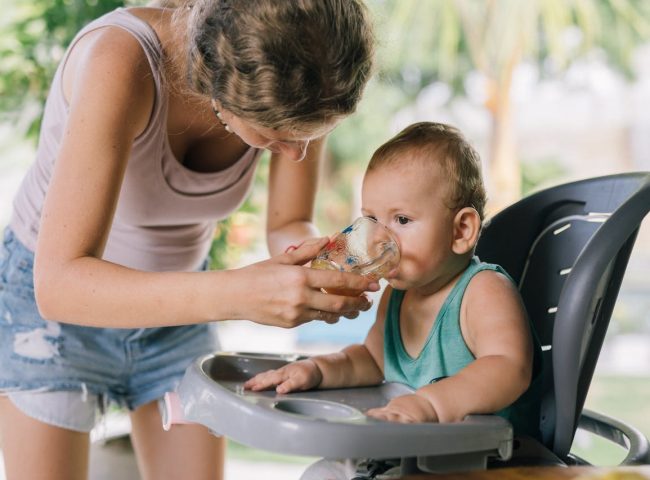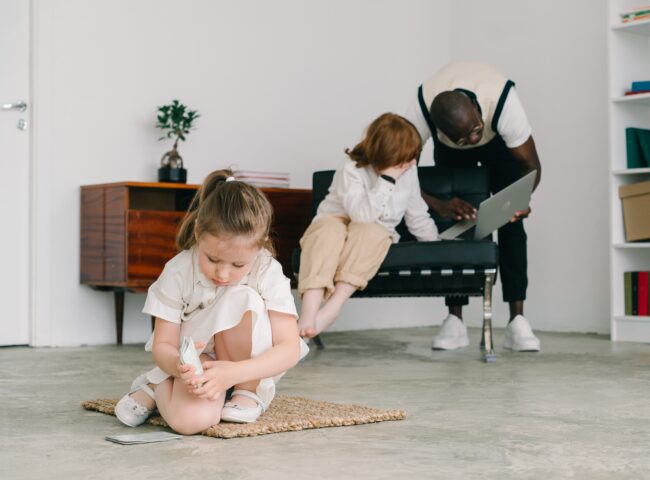For a variety of reasons, babies cry. It can be easy to tell when someone is hungry, weary, or even bored, but sometimes it can be more difficult to tell what someone wants. Babies don’t cry to irritate you; instead, it’s their only means of expressing a need.
Why do babies cry?
Young babies can only express themselves through crying. And weeping, especially during the first three months of life, fosters a tight bond between parents and their infant.
A few hours of weeping in the late afternoon and evening are typical for very young babies.
Your baby’s cry is intended by nature to elicit a prompt response from you because of its tone and intensity. They’ll discover different strategies as they get older to meet their needs. Be patient as you discover your baby’s needs and the possible meanings behind their cries.
The personality and temperament of your child affect how they behave. All babies are sensitive, but some require calming and reassurance a little more frequently than others.
Will my baby’s crying change as they grow?
A baby’s behavior is influenced by their diet, age, environment, and temperament. All babies have changes in their crying habits, and it can be challenging to figure out why.
When a baby enters a new developmental stage, their sleeping and feeding habits also shift. The same thing happens when kids are ill, teething, or have separation anxiety.
Babies require regular, caring care as they grow connections or neural pathways in their brains during the first three years of life. The energy required for this drains parents, who frequently experience fatigue and sleep deprivation.
Your baby’s sleep patterns will become more predictable as they become older. In a 24-hour day, a newborn sleeps for between 14 and 17 hours. They will require less sleep during the day as they become older and more sleep at night.
What are a few typical causes of crying?
It might not always be easy to understand why your infant is crying. However, it’s useful to be able to rule out a few of the most typical reasons for crying and comprehend your baby’s distress.
Consider whether your baby might be:
feeling uncomfortable — try changing their nappy and checking they’re not too hot or cold
hungry, tired or have a tummy ache — overtired babies often cry loudly when they need to sleep
in need of cuddles and reassurance
not feeling well — sometimes crying is the only obvious sign that a baby is unwell
What are the best ways to settle a crying baby?
When a baby is crying, most prefer to be scooped up and held. They can get more at ease by patting, rocking, shooshing, and swaying.
Babies under 3 months old frequently respond favorably to being swaddled. This promotes deeper sleep and gives them a sense of security. Until they develop more autonomous skills, young babies frequently like settling in arms or hands-on settling techniques.
Babies frequently get more relaxed with movement, which is why taking a stroll with the pram or carrying them in a sling or carrier can be helpful.
Some infants are more sensitive to stimuli like noise and light, and they relax more rapidly in a quiet, dark environment. Some people prefer some ambient noise than an entirely silent setting.
When your infant is crying, consider your own feelings. Many parents claim that their infant “picks up” on other home dynamics, particularly when there is conflict. When your infant is crying, try to be alert and concentrate on remaining composed and comforting.
Tips for settling your baby
After making sure they are fed, dry, clean, and comfy, think about whether they simply need to be close to you. Babies frequently only want to be held by those with whom they sense an emotional connection instead of needing anything to be “done” for them.
Pat, rock, or sway your infant while keeping them close to you. Let them know you are nearby by speaking in a calming, comforting tone. Sometimes holding your infant till they fall asleep is the only way you’ll be able to calm them. If your infant need constant cuddling to fall asleep, consult a child health nurse.
Take a walk outside and change your surroundings; this can be beneficial because it is distracting.
Try holding them in your arms in a variety of postures. Offer to touch their skin if they are still very young.
If your infant has a dummy, offer it to them.
After giving your baby a warm bath, rub them. Pay attention to your baby’s signals; some newborns enjoy bathing while others don’t like to get dressed.
Give your infant a calming breastfeed. Your infant may require additional milk if they are being fed by bottle.
Swaddle your infant in a thin cotton or muslin wrap if they are under three months old.
Play some music, attempt to hum, sing a song, or read a book to your child. Your voice alone could be soothing to them.
Give them to a different responsible adult. Take a break from your baby’s prolonged sobbing.
When healthy babies cry briefly, there is no long-term harm done. It’s crucial that parents take all reasonable steps to offer reassuring calm.
What can I do to help avoid my baby crying?
Maintain a regular settling ritual to help your baby feel safe and understand when it’s time to sleep. Babies move from being active to becoming tranquil with the aid of a gentle, scheduled wind-down period. The common symptoms that your infant needs to sleep include yawning, wiping their eyes, grizzling, and fussiness.
Baby feeding and bedtime should ideally be separate activities. Young newborns frequently fall asleep while being fed and held, which is natural and extremely common. Overtiredness might result from missing their “sleep window,” which makes it more challenging to fall asleep.
Ensure that they are cozy, dressed for the weather, and wearing a dry diaper. After a meal, most newborns can relax the best. Instead of having your infant fall asleep in your arms, try putting them in their crib while they’re still dozing off.
Keep company with them until they are at ease and starting to nod off. Encourage your child to develop autonomous settling skills so they won’t always require your assistance.
How can I take care of myself while my baby cries?
It’s crucial to take care of your personal needs because parenting can sometimes feel more like a marathon than a sprint. This entails having consistent, wholesome meals, drinking plenty of water, getting as much relaxation and sleep as you can, and understanding when to ask for assistance. Accept any acceptable support that is offered to you by your loved ones.
Though your kid is upset, try to maintain your composure. Do some breathing exercises and mindfulness exercises.
Recognize that you won’t always be able to predict what your baby wants. Try to perceive their sobbing as their main form of communication rather than something you need to “correct.”
What are the signs my baby is unwell?
Take your baby to a doctor if they have:
a fever of more than 380 degrees Celsius
vomiting or diarrhea
difficulty breathing
a rash, or pale or blue skin
changes in their feeding pattern, or less wet or dirty diapers.
Additionally, you shouldn’t be reluctant to take your infant to the doctor if you have any concerns or think that something is wrong.
What not to do when your baby is crying
When your kid is crying, especially when you can’t get them to stop, it can be stressful and distressing at times.
What’s important is that you never:
Shaking your infant can result in brain hemorrhage, which can cause brain damage and even death.
become angry with your infant, raising your voice, hitting, or otherwise treating them roughly roughly
When you’re furious, keep your infant near to you physically.
Put your baby in their cot and leave if you find yourself becoming overpowered by their cries. When you’re feeling at ease, come back. Be aware of your own mental health and, if you’re experiencing anxiety or depression, consult a doctor or a child health nurse.







